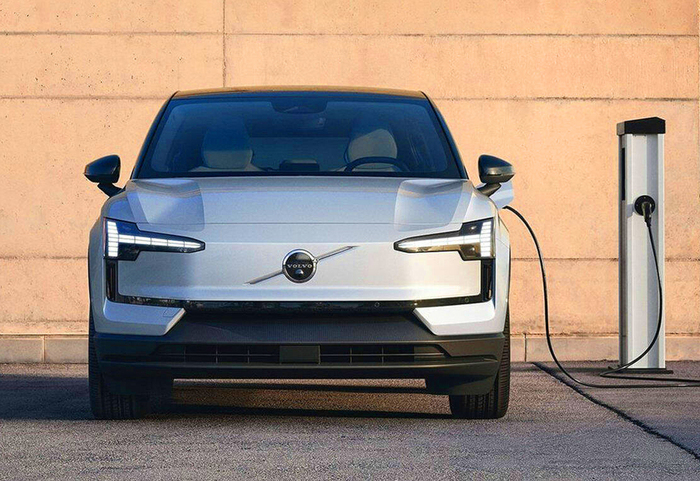This is the new reflex of some travellers, who feel guilty at the idea of flying in a context of climate emergency hammered home with each IPCC report.
Is it really reasonable to continue to use the most polluting means of transport in the world, according to the European Environment Agency (EEA)?
According to his figures, a passenger by plane emits 285 grams of CO2 per kilometer, compared to 158 grams by car and only 14 grams by train.
Some travelers give up flying, even if it means abandoning their holidays on the other side of the world.
Others instead turn to online CO2 calculators with the idea of offsetting the footprint of their journey afterwards.
Except that, depending on the actors, the results differ greatly.
The majority of them also belong to airlines, which raises the question of a possible conflict of interest.
Can we really trust these new tools?
Decryption.
Read alsoTravel without taking a plane: destinations accessible by ferry from France
176 kg of CO2 for a Paris-Madrid
The carbon footprint of an airplane journey results from two things.
First, from the combustion of kerosene which produces carbon dioxide (CO2).
Secondly, a certain number of other emission factors such as contrails, the extraction of kerosene, its transport, its refining... contributing to the greenhouse effect.
To calculate it, it would therefore be necessary - logically - to estimate these two parameters.
First, CO2.
To do this, “all
you have to do is measure the distance between the two reference airports, the aircraft model, and the number of passengers.
Once this data has been collected, calculate the kerosene necessary for this trip then divide it by the number of people on board in order to determine the share of each
”, explains to
Figaro
Matthieu Jousset, director of the Action division of the GoodPlanet foundation.
This is how we will be able to count the tonnes of greenhouse gases emitted by the combustion of kerosene during the trip, per person.
Is.
"
This is what most airlines provide through their calculators, what the law requires them to communicate
", comments Jean-Luc Manceau, director of Climat Mundi, a structure specializing in supporting companies towards ecological transition. .
Thus, based on this algorithm, Air France calculates 176 kg of CO2 per passenger for a round trip Paris (ORY) - Madrid (MAD).
According to Transavia, this figure amounts to 180 kg.
This corresponds to around 1,000 km by car, nearly 100,000 km by TGV and the consumption of 345 vegetarian meals or around twenty with beef, according to data from Ademe.
Read alsoA new carbon calculator for travellers: useful or gimmicky?
Kerosene is only the tip of the iceberg
However, as you will have understood, the calculation is not complete.
What about other emission factors?
"
This is where the shoe pinches
", according to the two professionals.
“
Kerosene is only the tip of the iceberg
,” warns Jean-Luc Manceau.
To be completely exact, one would also have to take into account the contrails, these long white traces which extend behind the planes and are linked to the spreading of chemical products resulting from the combustion of fuel.
They have no consequences when they disappear immediately, but in some cases, they stagnate in the sky for several hours, accentuating the greenhouse effect and therefore global warming.
“They can pass the
, reveals the director of Climat Mundi.
Other parameters that are not currently taken into account by the carbon calculators of airlines, emissions related to the manufacture of the device, the construction of airport infrastructure or the extraction of kerosene.
"
Factors that would further increase the carbon footprint figures if they were included in the calculation
," reports Matthieu Jousset.
Thus, taking into account these last parameters, for the same round trip Paris-Madrid, Good Planet calculates 610 kg of CO2 emitted per passenger.
Equivalently, this corresponds to nearly 3,000 km by car, nearly 300,000 km by TGV, 1,196 vegetarian meals or 84 with beef.
That's almost four times the results of Air France and Transavia...
Except that nothing in French regulations or in European laws obliges airlines to communicate this data.
They are also difficult to calculate.
According to Antoine Laborde, climate manager at Air France:
“Contrails depend on the altitude of the plane, the humidity level of the air, the time of day or night, the type of engine.
Ditto for the nitrogen oxides released, which produce ozone on one side but destroy methane on the other…”
, he explains.
This calculation is therefore not "
unanimous among scientists
" according to the Directorate General of Civil Aviation (DGAC), which does not take them into account in its calculation either.
Read alsoGo far away, pollute less: nine beautiful trips that play the slow tourism card
The issue of compensation
What about carbon offsetting, the logical continuation of the calculation of its footprint, now offered by the majority of companies?
"
At home, we talk more about climate gesture
", launches Antoine Laborde of Air France.
“
We offer travelers the opportunity to make a donation in favor of reforestation projects
”.
A beneficial action for the planet, of course, but which has certain limits for environmental associations.
“
For me, it's a bit like EDF working voluntarily on reducing energy consumption.
Ethically, it doesn't make sense
”, protests the manager of Climat Mundi, who also wonders about the nature of these “
projects
”.
What are they ?
Who directs them?
What margin do intermediaries make?
For him, all of this “
is just the magic formula to give yourself a 'good conscience'.
The solution ?
Reduce air travel, period
.
Air France logically speaks rather "
of investing in a modern fleet which consumes less and therefore emits less greenhouse gases, of reducing the weight on board because the lighter an aircraft is, the less fuel it consumes and to fly lower , another way to limit consumption
”.









